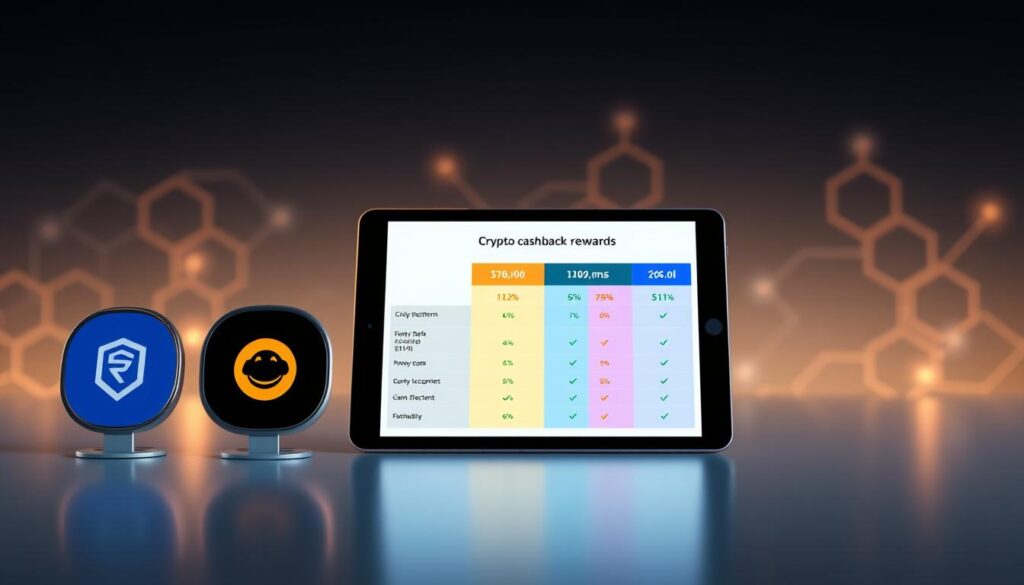Now Reading: DeFi Farming Secrets: Grow Your Crypto Rewards Effortlessly
- 01
DeFi Farming Secrets: Grow Your Crypto Rewards Effortlessly
DeFi Farming Secrets: Grow Your Crypto Rewards Effortlessly

DeFi yield farming has become a popular way to earn passive income in the cryptocurrency market, allowing individuals to grow their crypto rewards effortlessly. To get started with DeFi farming, it’s essential to understand how to farm crypto rewards in DeFi, which involves investing in various DeFi protocols to generate yields.
DeFi yield farming offers a unique opportunity for investors to earn rewards in the form of cryptocurrencies, making it an attractive option for those looking to diversify their investment portfolios. By learning how to farm crypto rewards in DeFi, individuals can unlock the full potential of DeFi yield farming and start generating passive income.
As the DeFi market continues to evolve, it’s crucial to stay informed about the latest trends and strategies in DeFi yield farming. Whether you’re a seasoned investor or just starting out, understanding the basics of DeFi yield farming is essential to making informed investment decisions.
Introduction to DeFi Yield Farming
DeFi yield farming involves investing in various DeFi protocols to generate yields, which can be in the form of cryptocurrencies or other digital assets. By learning how to farm crypto rewards in DeFi, individuals can take advantage of the growing demand for DeFi protocols and earn passive income.
Key Takeaways
- DeFi yield farming allows individuals to earn passive income in the form of cryptocurrencies
- Understanding how to farm crypto rewards in DeFi is essential to getting started with DeFi farming
- DeFi yield farming involves investing in various DeFi protocols to generate yields
- DeFi yield farming offers a unique opportunity for investors to diversify their investment portfolios
- Staying informed about the latest trends and strategies in DeFi yield farming is crucial to making informed investment decisions
- DeFi yield farming has become a popular way to earn passive income in the cryptocurrency market
Understanding DeFi Yield Farming Fundamentals
DeFi yield farming has gained significant attention in recent years, offering a unique opportunity for investors to generate passive income in DeFi. This innovative approach to cryptocurrency investing involves providing liquidity to decentralized finance protocols, allowing users to earn rewards in the form of tokens or other digital assets. To fully grasp the concept of DeFi yield farming, it’s essential to understand the underlying fundamentals and key components involved.
At its core, DeFi yield farming relies on crypto farming strategies that optimize returns through the strategic allocation of assets. By leveraging various protocols and platforms, investors can maximize their earnings and minimize risks. The evolution of DeFi protocols has played a crucial role in the development of yield farming, with many platforms now offering advanced features and tools to support this growing market.
- Liquidity provision: Providing assets to decentralized exchanges and lending platforms to facilitate trading and borrowing.
- Yield optimization: Using strategies such as leverage and multi-asset portfolios to maximize returns.
- Risk management: Implementing techniques to mitigate potential losses and protect investments.
By understanding these fundamentals and incorporating effectivecrypto farming strategies, investors can unlock the full potential of DeFi yield farming and generate significantpassive income in DeFi.
The Economics Behind Crypto Farming Rewards
Understanding the economics behind crypto farming rewards is crucial for maximizing returns in DeFi yield farming. The best DeFi yield farming projects offer attractive rewards, but they also come with yield farming risks that must be carefully managed. To navigate these risks, it’s essential to comprehend the factors that influence reward rates and the economic principles that govern DeFi farming.
Some key factors that affect reward rates include the type of cryptocurrency being farmed, the liquidity of the market, and the level of competition among farmers. By understanding these factors and staying informed about market trends, farmers can make informed decisions about which best DeFi yield farming projects to participate in and how to mitigate yield farming risks.
To minimize risks and maximize rewards, farmers should consider the following strategies:
- Diversify their portfolio by participating in multiple DeFi yield farming projects
- Stay up-to-date with market trends and adjust their strategy accordingly
- Use analytics tools to monitor their performance and optimize their strategy
By following these strategies and staying informed about the economics of DeFi farming, farmers can navigate the yield farming risks and maximize their rewards in the best DeFi yield farming projects.
Essential Tools and Platforms for DeFi Farming
DeFi farming requires a range of tools and platforms to succeed. To maximize DeFi rewards, it’s essential to have the right tools and platforms in place. DeFi liquidity mining is a key aspect of DeFi farming, and having the right tools can help you navigate this complex process.
Popular DeFi Protocols
Some popular DeFi protocols include Uniswap, Aave, and Compound. These protocols provide a range of financial services, including lending, borrowing, and trading. To get started with DeFi farming, it’s essential to understand how these protocols work and how to use them to maximize DeFi rewards.
Wallet Requirements
A secure wallet is essential for DeFi farming. Some popular wallet options include MetaMask, Ledger, and Trezor. When choosing a wallet, it’s essential to consider factors such as security, usability, and compatibility with DeFi protocols.
Analytics Tools for Farmers
Analytics tools can help DeFi farmers track their performance and make data-driven decisions. Some popular analytics tools include DeFi Pulse, DeFi Llama, and CoinGecko. These tools provide a range of metrics, including liquidity, trading volume, and market capitalization.

By using these tools and platforms, DeFi farmers can maximize DeFi rewards and succeed in the complex world of DeFi liquidity mining.
How to Farm Crypto Rewards in DeFi: A Complete Guide
To get started with DeFi token farming, it’s essential to understand the basics of DeFi and how it works. DeFi token farming involves providing liquidity to decentralized protocols in exchange for crypto rewards. This process can be complex, but with the right guidance, anyone can learn how to farm crypto rewards in DeFi.
The first step in DeFi token farming is to choose a reputable platform that supports DeFi protocols. Some popular options include Uniswap, Aave, and Compound. Once you’ve selected a platform, you’ll need to create a digital wallet and fund it with the required tokens.
Here are the general steps to follow for DeFi token farming:
- Research and select a DeFi protocol to farm
- Create a digital wallet and fund it with the required tokens
- Provide liquidity to the DeFi protocol
- Monitor and adjust your portfolio as needed
It’s also important to understand the risks involved in DeFi token farming, such as market volatility and smart contract risks. However, with the right strategies and knowledge, you can minimize these risks and maximize your rewards. By following these steps and staying up-to-date with the latest developments in DeFi, you can learn how to farm crypto rewards in DeFi and start earning passive income.
Selecting the Right DeFi Projects for Farming
When it comes to DeFi farming, selecting the right projects is crucial to minimize Yield farming risks and maximize returns. With numerous DeFi projects available, it’s essential to evaluate each project’s security, yield potential, and community activity.
To make informed decisions, consider the following factors:
- Security: Look for projects with robust security measures, such as audited smart contracts and secure wallets.
- Yield potential: Assess the project’s potential for generating high yields, considering factors like liquidity and market demand.
- Community activity: Evaluate the project’s community engagement, development activity, and overall reputation.
Some of the Best DeFi yield farming projects prioritize transparency, security, and community involvement. By researching and evaluating these factors, you can make informed decisions and minimize Yield farming risks.
By carefully selecting the right DeFi projects, you can optimize your farming strategy and achieve higher returns. Remember to stay informed about market trends and project developments to adapt your strategy accordingly.
Liquidity Pool Strategies for Maximum Returns
To maximize returns in DeFi farming, it’s essential to understand liquidity pool strategies. DeFi liquidity mining allows users to provide liquidity to a pool and earn rewards in the form of tokens or fees. This strategy can be lucrative, but it also comes with risks, such as impermanent loss.
One way to mitigate these risks is to diversify your liquidity across multiple pools. By doing so, you can spread out your risk and potentially increase your overall returns. For example, you can provide liquidity to a pool that offers passive income opportunities and another pool that offers higher yields but with higher risks.
Here are some tips for Maximizing DeFi rewards through liquidity pool strategies:
- Research the pool’s underlying assets and their potential for growth
- Understand the pool’s fee structure and how it affects your rewards
- Monitor the pool’s liquidity and adjust your strategy accordingly
By following these tips and staying informed about market trends, you can optimize your liquidity pool strategy and maximize your DeFi rewards. Remember to always prioritize risk management and diversification to ensure long-term success in DeFi farming.
Advanced Yield Farming Techniques
Experienced yield farmers often employ advanced techniques to maximize their rewards. These techniques include leverage farming, which involves using borrowed funds to increase potential gains, and multi-pool strategies, which involve distributing funds across multiple pools to minimize risk. By using these Crypto farming strategies, farmers can optimize their returns and stay ahead in the competitive world of DeFi token farming.
Some advanced yield farmers also use yield optimization tools to streamline their operations and maximize their earnings. These tools can help farmers identify the most profitable pools, manage their risk, and make data-driven decisions. By combining these tools with effective DeFi token farming strategies, farmers can achieve higher returns and build a sustainable farming portfolio.
To get started with advanced yield farming, it’s essential to understand the benefits and risks of each technique. Here are some key considerations:
- Leverage farming: increases potential gains, but also increases risk
- Multi-pool strategies: minimizes risk, but may reduce potential gains
- Yield optimization tools: streamlines operations, but may require significant upfront investment
By carefully evaluating these factors and developing a well-informedCrypto farming strategy, farmers can unlock the full potential of DeFi token farming and achieve long-term success.
Managing and Mitigating DeFi Farming Risks
DeFi farming, like any investment, comes with its own set of risks. Understanding these yield farming risks is crucial to navigating the DeFi landscape and maximizing passive income in DeFi. One of the primary risks is the volatility of the cryptocurrency market, which can lead to significant losses if not managed properly.
To mitigate these risks, it’s essential to diversify your portfolio and stay informed about market trends. This can include spreading your investments across different DeFi protocols and assets, as well as keeping up-to-date with the latest news and developments in the space. Additionally, it’s crucial to understand the smart contracts and protocols you’re interacting with, as flaws in these can lead to significant losses.
- Conducting thorough research on DeFi protocols and assets before investing
- Diversifying your portfolio to minimize risk
- Staying informed about market trends and developments
- Understanding the smart contracts and protocols you’re interacting with
By following these strategies and being aware of the potentialyield farming risks, you can help minimize your exposure and maximize yourpassive income in DeFi.
Gas Optimization and Cost Management
DeFi yield farming involves various strategies to maximize rewards, but it also comes with significant costs. One of the major expenses in DeFi farming is gas fees, which can eat into your profits if not managed properly. To minimize costs and maximize DeFi rewards, it’s essential to optimize gas usage and explore cost-effective solutions.
Timing Your Transactions
Timing your transactions can help reduce gas fees. By executing transactions during off-peak hours, you can avoid high gas prices and save on costs. Additionally, using tools that analyze gas prices and predict optimal transaction times can help you make informed decisions.
Layer 2 Solutions
Layer 2 solutions, such as Optimism and Arbitrum, offer a scalable and cost-effective way to participate in DeFi yield farming. These solutions enable faster transaction processing and lower gas fees, making it possible to maximize DeFi rewards without breaking the bank. By leveraging layer 2 solutions, you can optimize your DeFi farming strategy and improve your overall returns.

To get the most out of DeFi yield farming, it’s crucial to understand the importance of gas optimization and cost management. By implementing these strategies, you can minimize costs, maximize DeFi rewards, and take your DeFi farming to the next level.
Tax Implications and Record Keeping for Yield Farmers
When it comes to DeFi token farming, understanding the tax implications is crucial. As a yield farmer, it is essential to know how to farm crypto rewards in DeFi and navigate the complexities of tax laws. The tax implications of DeFi farming can be complex, and it is vital to maintain accurate records to ensure compliance with tax laws.
To ensure compliance, yield farmers should keep track of their transactions, including the date, time, and amount of each transaction. This information can be used to calculate taxes owed and to provide documentation in case of an audit. It is also important to understand the different types of taxes that may apply, such as capital gains tax and income tax.
- Understanding the tax laws and regulations in their country of residence
- Keeping accurate records of all transactions
- Calculating taxes owed and making timely payments
By following these steps and staying informed about the tax implications of DeFi farming, yield farmers can minimize their tax liability and ensure compliance with tax laws. This will help them to maximize their returns fromhow to farm crypto rewards in DeFiand achieve their financial goals.
Automated Farming Strategies and Tools
DeFi liquidity mining has become a popular way to earn rewards in the cryptocurrency space. By utilizing automated farming strategies and tools, individuals can maximize their returns and streamline their Crypto farming strategies. One key aspect of automated farming is smart contract automation, which allows for the execution of complex transactions without manual intervention.
Yield aggregators are another important tool in automated farming, as they enable users to pool their resources and earn higher yields than they would individually. By leveraging these tools and strategies, farmers can optimize their DeFi liquidity mining efforts and achieve greater success in the Crypto farming space.
Some benefits of automated farming strategies include increased efficiency, reduced risk, and improved yields. However, it’s essential to carefully evaluate the risks and benefits of each tool and strategy to ensure they align with your overall Crypto farming goals. By doing so, you can create a robust and effective automated farming strategy that helps you achieve success in the DeFi space.
- Smart contract automation for efficient transactions
- Yield aggregators for pooled resources and higher yields
- Automated farming strategies for optimized DeFi liquidity mining
Common Pitfalls to Avoid in DeFi Farming
DeFi farming can be a lucrative venture, but it’s essential to be aware of the yield farming risks involved. One of the most significant pitfalls is investing in projects without thoroughly researching their security and potential for returns. To avoid this, it’s crucial to understand the best DeFi yield farming projects and their underlying mechanics.
Some common mistakes made by yield farmers include:
- Insufficient research on the project’s smart contract and potential vulnerabilities
- Failure to diversify their portfolio, leading to overexposure to a single project
- Not keeping track of yield farming risks and adjusting their strategy accordingly
To mitigate these risks, it’s essential to stay informed about the latest developments in the DeFi space and to continuously monitor the performance of your investments. By being aware of the potential pitfalls and taking steps to avoid them, you can maximize your returns and ensure a successful DeFi farming experience.

By understanding the best DeFi yield farming projects and being mindful of the yield farming risks, you can navigate the DeFi farming landscape with confidence and achieve your financial goals.
Building a Sustainable Farming Portfolio
To achieve long-term success in DeFi token farming, it’s essential to build a sustainable farming portfolio. This involves creating a balanced portfolio that generates passive income in DeFi, while minimizing risk. A well-diversified portfolio can help farmers navigate the ever-changing DeFi landscape and maximize their rewards.
Diversification Strategies
One key strategy for building a sustainable portfolio is diversification. This involves spreading investments across multiple DeFi protocols and assets to reduce risk. By diversifying their portfolio, farmers can reduce their exposure to any one particular asset or protocol, and increase their potential for long-term growth.
Risk-Reward Balance
Another crucial aspect of building a sustainable portfolio is finding the right risk-reward balance. This involves carefully evaluating the potential risks and rewards of each investment and making informed decisions. Farmers should aim to balance their portfolio with a mix of low-risk and high-risk investments to achieve a sustainable level of returns.
Some popular DeFi token farming strategies include:
- Liquidity provision
- Yield farming
- Staking
These strategies can help farmers generate passive income in DeFi and build a sustainable farming portfolio.
Future Trends in DeFi Yield Farming
As the DeFi ecosystem continues to evolve, DeFi yield farming is expected to play a significant role in shaping the future of cryptocurrency investing. To stay ahead of the curve, it’s essential to understand the latest trends and developments in DeFi yield farming.
One of the key trends to watch is the increasing adoption of DeFi protocols that offer more efficient and secure ways to farm crypto rewards. As more investors enter the DeFi space, the demand for user-friendly and reliable platforms will continue to grow.
Another trend to consider is the rise of yield optimization tools that help farmers maximize their returns. These tools use advanced algorithms and machine learning techniques to optimize farming strategies and minimize risks.
To succeed in DeFi yield farming, it’s crucial to stay up-to-date with the latest developments and trends in the space. This includes learning how to farm crypto rewards in DeFi and understanding the risks and opportunities associated with different DeFi protocols and yield optimization tools.
By staying informed and adapting to the changing landscape of DeFi yield farming, investors can position themselves for success and maximize their returns in this rapidly evolving space.
Conclusion: Mastering Your DeFi Farming Journey
As we’ve explored the intricacies of DeFi farming, it’s clear that this realm offers immense potential for growing your crypto rewards through strategic yield harvesting. However, navigating the DeFi ecosystem requires a keen understanding of the fundamentals, tools, and risk management strategies.
Becoming a successful DeFi farmer is an ongoing process of learning, adaptation, and refinement. Stay informed about the latest developments in DeFi protocols, explore emerging opportunities, and continuously optimize your farming strategies to stay ahead of the curve. Remember, the DeFi landscape is constantly evolving, so maintaining a growth mindset is essential for maximizing your rewards.
By mastering the art of DeFi farming, you’ll be well-positioned to unlock the true potential of decentralized finance and build a sustainable portfolio of crypto assets. Embrace the challenges, learn from the community, and let your DeFi farming journey be a rewarding and empowering experience.
FAQ
What is DeFi Farming?
DeFi Farming, also known as yield farming, is the practice of locking up cryptocurrency assets in decentralized finance (DeFi) protocols to earn rewards or interest.
What are the key components of DeFi Yield Farming?
The key components of DeFi yield farming include liquidity pools, staking, and lending/borrowing protocols. Yield farmers provide liquidity to these platforms and earn rewards in the form of tokens or interest.
How has the DeFi ecosystem evolved?
The DeFi ecosystem has evolved rapidly, with the introduction of new protocols, decentralized exchanges, and innovative yield farming strategies. This has led to increased opportunities for yield farmers to earn rewards, but also increased risks.
What factors influence the economics of crypto farming rewards?
The economics of crypto farming rewards are influenced by factors such as the supply and demand of the underlying tokens, the risk profile of the DeFi protocol, and the competition among yield farmers.
What are some popular DeFi protocols for yield farming?
Some of the most popular DeFi protocols for yield farming include Uniswap, Compound, Aave, and Curve Finance. These platforms offer various yield farming opportunities with varying levels of risk and reward.
What wallet requirements are needed for DeFi farming?
To participate in DeFi farming, users typically need a non-custodial cryptocurrency wallet that supports the DeFi protocols they wish to use, such as MetaMask or Trust Wallet.
What analytics tools are available for DeFi farmers?
There are various analytics tools available for DeFi farmers, such as DeFi Pulse, Zapper, and Debank, which provide insights into DeFi protocol performance, liquidity, and yield opportunities.
What are the key security considerations when selecting DeFi projects for farming?
When selecting DeFi projects for farming, it’s important to consider factors such as the project’s security audit history, the team’s reputation, and the protocol’s overall risk profile.
How can yield potential be analyzed for DeFi projects?
To analyze the yield potential of DeFi projects, farmers should consider factors such as the token’s price volatility, the project’s liquidity, and the rewards structure offered by the protocol.
What is the importance of community and development activity for DeFi projects?
The community and development activity of a DeFi project can indicate its long-term viability and growth potential, which is an important consideration for yield farmers.
What are the benefits and risks of liquidity pool strategies in DeFi farming?
Liquidity pool strategies can provide higher returns, but also carry risks such as impermanent loss and smart contract vulnerabilities. Understanding these tradeoffs is crucial for maximizing returns in DeFi farming.
What is leverage farming and how can it be used in DeFi?
Leverage farming involves borrowing assets to increase the capital deployed in DeFi protocols, potentially amplifying rewards but also increasing risks. Experienced farmers may use leverage to optimize their DeFi farming strategies.
What are some multi-pool strategies for DeFi farming?
Multi-pool strategies involve diversifying across multiple DeFi protocols and liquidity pools to reduce risk and capture different yield opportunities. This can help farmers mitigate the impact of volatility in any single protocol.
What are some yield optimization tools for DeFi farming?
Yield optimization tools, such as Yearn Finance and Harvest Finance, can automate the process of moving funds between different DeFi protocols to maximize returns while minimizing gas fees and other costs.
How can DeFi farming risks be managed and mitigated?
Risks in DeFi farming can be managed through diversification, regular monitoring, and the use of tools and strategies to minimize exposure to smart contract vulnerabilities, impermanent loss, and other potential pitfalls.
How can gas optimization and cost management strategies be applied to DeFi farming?
Strategies such as timing transactions, using Layer 2 solutions, and optimizing gas usage can help yield farmers minimize the impact of gas fees and other costs, thereby maximizing their net returns.
What are the tax implications and record-keeping requirements for DeFi yield farmers?
Yield farmers must comply with applicable tax laws and regulations, which often require detailed records of their DeFi farming activities, including transactions, rewards, and any realized gains or losses.
What are some automated farming strategies and tools available for DeFi?
Automated farming strategies, such as those provided by smart contract platforms and yield aggregators, can help streamline the DeFi farming process and improve efficiency by automating tasks like token swaps, compounding rewards, and rebalancing portfolios.
What are some common pitfalls to avoid in DeFi farming?
Common pitfalls to avoid in DeFi farming include impermanent loss, smart contract vulnerabilities, high gas fees, and over-leveraging. Careful risk management and research are crucial to navigate these challenges.
How can a sustainable DeFi farming portfolio be built?
Building a sustainable DeFi farming portfolio involves diversifying across multiple protocols, maintaining a balanced risk-reward profile, and continuously monitoring and adjusting the portfolio to adapt to market changes.
What future trends are expected in the DeFi yield farming space?
Potential future trends in DeFi yield farming include the increased adoption of Layer 2 solutions, the development of more sophisticated yield optimization tools, and the continued evolution of DeFi protocols to address the risks and complexities associated with yield farming.














